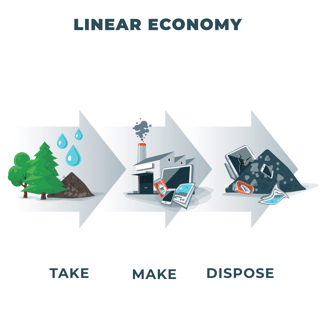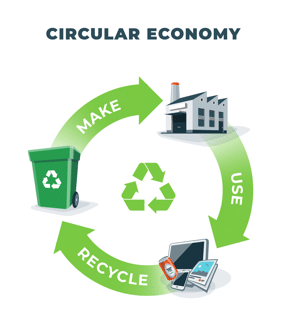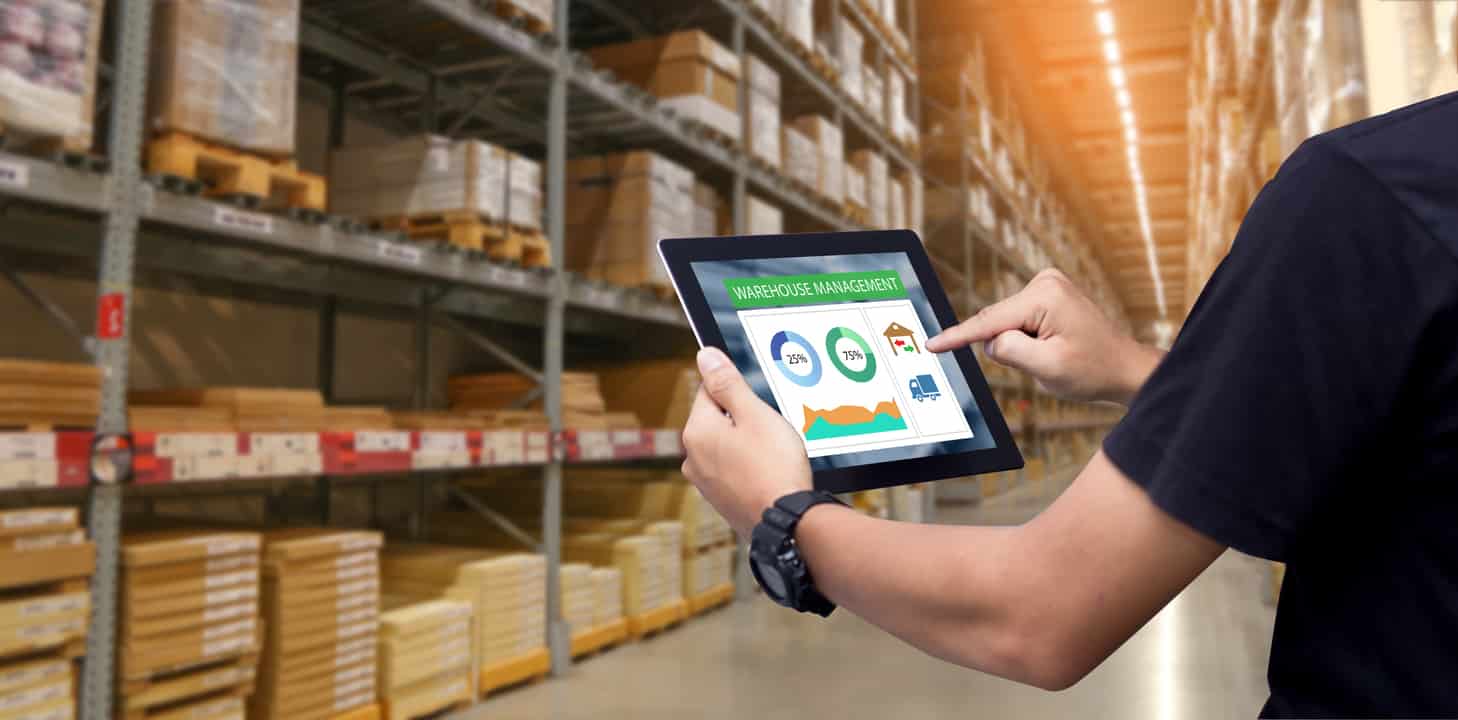Recommerce – also called “resale” or “remarket” – is the act of reselling a used item, usually on a recommerce platform or online marketplace. The buyer may use the item personally, or they might repair it, refurbish it, and/or resell it. Recommerce is an especially common practice for pre-used clothing, luxury items, and housewares.
Why is Recommerce so Popular?
Recommerce is an increasingly popular channel for both buyers and sellers because of cost savings and sustainability factors. Whereas purchasing a used item may have been a last resort (or even embarrassing) to shoppers a decade or two ago, today it is a bragging right for many. According to the latest eBay’s Recommerce Report, 90% of all eBay buyers had engaged in recommerce by purchasing something used in the last year, and the market for second-hand clothing is predicted to grow 127% by 2026.
Technology expanded the recommerce market
The success of a recommerce program depends on the returns management technology that facilitates it: A returns management system (RMS) makes it easier than ever for retailers to maximize the value of a product return and determine the best channel to remarket the item. An RMS facilitates, manages and reports on the entire lifecycle of a product return.
“Returns with ReverseLogix RMS are at least 50-60% faster than the previous system.”
– Director of Distribution Operations, Global Retailer
Young consumers value affordability & sustainability
It’s no secret that Millennials and Gen Z put a huge value on sustainable products and reasonable prices – making recommerce programs a sweet spot for these shoppers. According to the same eBay report mentioned above, 64% of Gen Z shoppers said financial savings was a reason for recommerce purchases. When it comes to valuing sustainability of pre-owned goods, 36% of Gen Z, 39% of Millennials and 26% of Boomers agreed.
Brands are buying into recommerce
The emphasis on sustainability and cost – coupled with high inflation and supply chain issues – have created prime conditions for retailers’ recommerce programs (go here to learn more about recommerce and sustainable return programs). According to the 2023 Resale Report from ThredUp, “the global secondhand apparel market is expected to grow 3 times faster on average than the global apparel market overall.”
With the demand from consumers and burgeoning number of high-end brands offering reselling options, recommerce should be viewed as a seismic shift in the way consumers shop.

The Benefits of a Recommerce Program
Brands aren’t jumping into the recommerce market because it’s a fad; the huge increase in retailers and shoppers participating in recommerce reflects real value. Benefits of a recommerce program include:
- A better understanding of recovery costs and how to connect returned inventory to the right channels
- Increased value of returned items in secondary markets
- Better control of a company brand, reducing counterfeit products with total visibility into recommerce and restock opportunities
- Using data to make smarter decisions and keep unsold items out of landfills
- Driving sustainability goals by embracing recycling, repair or resale opportunities
By considering resale opportunities, brands can both increase revenue and reduce their carbon footprint.
Move toward a circular economy model
The circular economy is a model for reducing the environmental impact by re-defining a product’s lifecycle. For brands, this means prioritizing the reuse, repair and recommerce of an item rather than landfilling it. (According to the 2023 Resale Report from ThredUp, buying and wearing used clothing instead of new slashes carbon emissions by an average of 25%.)
+50% of supply chain professionals expect a greater focus on circular economy strategies.
– U.S. Cotton Trust Protocol


Reduced costs & increase revenue opportunities
A recommerce program can be a great way to stay engaged with customers and resell items that would otherwise have no value or be landfilled. Whether you outsource your recommerce program (many brands do) or run it in-house, the program is only a smart revenue opportunity if you know the true cost of your returns.
Purpose-built returns management software and analytics will help you uncover the true cost of product returns and the financial impact of your recommerce decisions.
Improve brand reputation & customer satisfaction
Although an item’s resale price dips lower than the original price, the brand value often increases: Retailers with a strong recommerce program report stronger loyalty and brand reputation. In fact, reputation is what drove the luxury fashion brand Oscar de la Renta to launch its own resale site. Today, it has greater control over its products and can give customers greater peace of mind about the quality and authenticity of its products.
Competitive advantage
Giving consumers another chance at your quality merchandise – at a lower cost – gives you a chance at a new market and new channel to expand your brand. By offering discounted, quality merchandise, you can reach new audiences that may otherwise pass on the price tag.

Partnerships with environmental organizations
A solid recommerce program with measurable outcomes can pave a path to unique and useful partnerships: Consider aligning with an environmental organization to shine a brighter spotlight on your brand while working toward mutual goals. For example, REI’s Re/Supply recommerce program is part of a larger corporate effort that donated +$7 million to 450 nonprofits working to protect people and the planet.
Compliance with environmental regulations
It’s no secret that product returns – especially fashion – have a huge impact on the environment.
- An estimated 10% of all returns end up in a landfill (McKinsey)
- Return shipping transportation in the U.S. creates the equivalent emissions of +3 million cars annually (Earth911)
As the EU and other governmental bodies take action on setting standards for returns and repairs, brands are well-advised to get ahead of regulations now: Consider a remarket program to lower both the costs of returns management and your environmental impacts.
Types of Recommerce Programs
While any brand should consider a recommerce program, take care to only move forward with a program that makes sense for your organization: One that has a real impact on your sustainability goals, is profitable, and that enables you to keep your brand promise. These are the most common recommerce programs:
- Trade-in | Buy Back: Pay or credit customers for used products they give back and resold on the brand’s / retailer’s own website or a marketplace
- Refurbished | Worn: Sell products with small cosmetic flaws, imperfections, due to factors ranging from production issues to customers returns to maximize recovery
- Take Back | Recycling: Take back used products from your customers for recycling or downcycling to a third party for deconstruction
- Resale: Accept used products from your customers (but do not pay them) and you resell them as used on either a website you own or on a marketplace website
How ReverseLogix Recommerce Platform Helps Your Recommerce Program
A recommerce program must have a recommerce technology platform to serve as its foundation. There is only one type of software purpose-built for the charge: A ReverseLogix return management system (RMS).
The ReverseLogix RMS features a recommerce module that helps brands maximize the value of their return and their recommerce program.
- Increase the value from returned inventory in secondary markets
- Increase the velocity of inventory sales with more streamlined processing
- Maintain brand equity and protect reputation with total visibility of repair and recommerce cycles
- Continually improve inspection, minimize losses and drive repurchase
- Reduce returns-related waste and improve sustainability
- Get insight on manufacturing and sourcing changes that affect the bottom line
An RMS orchestrates the entire lifecycle of a product return, from start-to-finish. By replacing traditional point systems, it saves companies money and streamlines the return and recommerce process.
Repairs management & recommerce
ReverseLogix works behind the scenes to funnel returns into the right channels based on cost, demand, and sustainability goals. Because an RMS integrates with other core systems like a WMS, ERP, TMS and more, returns data can be gathered and pushed to other supply chain software.
- Manage parts replacement, testing, and warranty-based repairs
- Instantly relist returned items based on your primary and/or secondary channels
- Integrate resale items with branded storefronts that showcase resale item images, listings, product condition, and trade-in credits
Improved visibility & control
An RMS that manages the entire return lifecycle gives brands unprecedented visibility into returns data. Returns trends are recognized more quickly, problems are pinpointed faster and return costs are accurately estimated.
- Better visibility into recommerce and restock opportunities helps you maintain better control of your brand, reducing counterfeit products.
- Establish standards for quality control; identify, route and issue credit for any item. Easily incorporate a circular business model.
“Now with reports about reason coding, how often returns are happening and how many products are in bad shape, we’re getting control of the process. We can help brands decide what needs to be improved and reduce the number of returns in general.”
– Kai Bahlman, Vice President of Warehousing at Amer Sports
Automated & simplified returns management
Recover more value from every unit: With ReverseLogix RMS, brands streamline processing, reduce environmental impact and manage transportation costs by consolidating products and vendors. Your returns data is simplified and automated, revealing trends and problems faster so you can adapt manufacturing and sourcing – and improve in real time.
Data & analytics tracking capabilities
ReverseLogix customers use RMS data to make smarter decisions and keep unsold items out of landfills. With rich data and intelligence, brands can set smarter recommerce strategies that align with sustainability promises.
- Understand recovery costs and how to connect returned inventory to the right channels
- ReverseLogix gives items a unique, lifetime serial number to track information for simplified and precise stock management
- Pricing algorithms allow you to maximize recovered costs based on demand and historical data

Customizable customer portal
The more seamless the customer experience is, the better your recommerce program will be. A big hurdle for shoppers is simply understanding what a company’s resale program is and how to use it!
With a fully branded recommerce marketplace site, you’re giving customers a consistent experience whether they are making a new item purchase on your primary eCommerce site, a used purchase on your recommerce site supported by ReverseLogix, or returning an item via the ReverseLogix customer returns portal. With each step, you can offer cross-sell opportunities while reinforcing your sustainability goals. Learn more about improving the customer return experience.
Efficient disposition management
This is the bottom line: Returns have to be efficient and save you money, otherwise it’s not a sustainable resale model. ReverseLogix offers an intuitive, simplified vendor management program that unifies your ecosystem to ensure value.
- “Ready to List” option maximizes a return’s value by routing it to restock or its most profitable home
- Instantly relist returned items on your own site or a third-party marketplace
- Recommerce-based inspection and grading helps you set rules for restock based on geography or seasonality
Multi-warehouse support
Managing a remarket program will be complex, especially if you have multiple warehouse or DC locations. The ReverseLogix platform can be implemented across a store and warehouse network, so you get consistent, standardized workflows with predictable results.
- Graphical location system
- Kit and consolidation
- Invoicing
- Transfer out
- Mini warehouse visualization
Third-party application integration
The ReverseLogix RMS integrates with your existing supply chain software (OMS, WMS, TMS, ERP, etc.) as well as out-of-the-box integration with the world’s biggest marketplaces. With this flexibility, you can synchronize in-store and online sales and connect to current inventory and order systems effortlessly with easy APIs.
Is a Recommerce Program Right for you?
With a recommerce program supported by the ReverseLogix RMS, brands are unlocking new opportunities and driving revenue while creating a loyal customer base. Find out how the ReverseLogix RMS can help your business meet strategic goals and uncover new markets!

